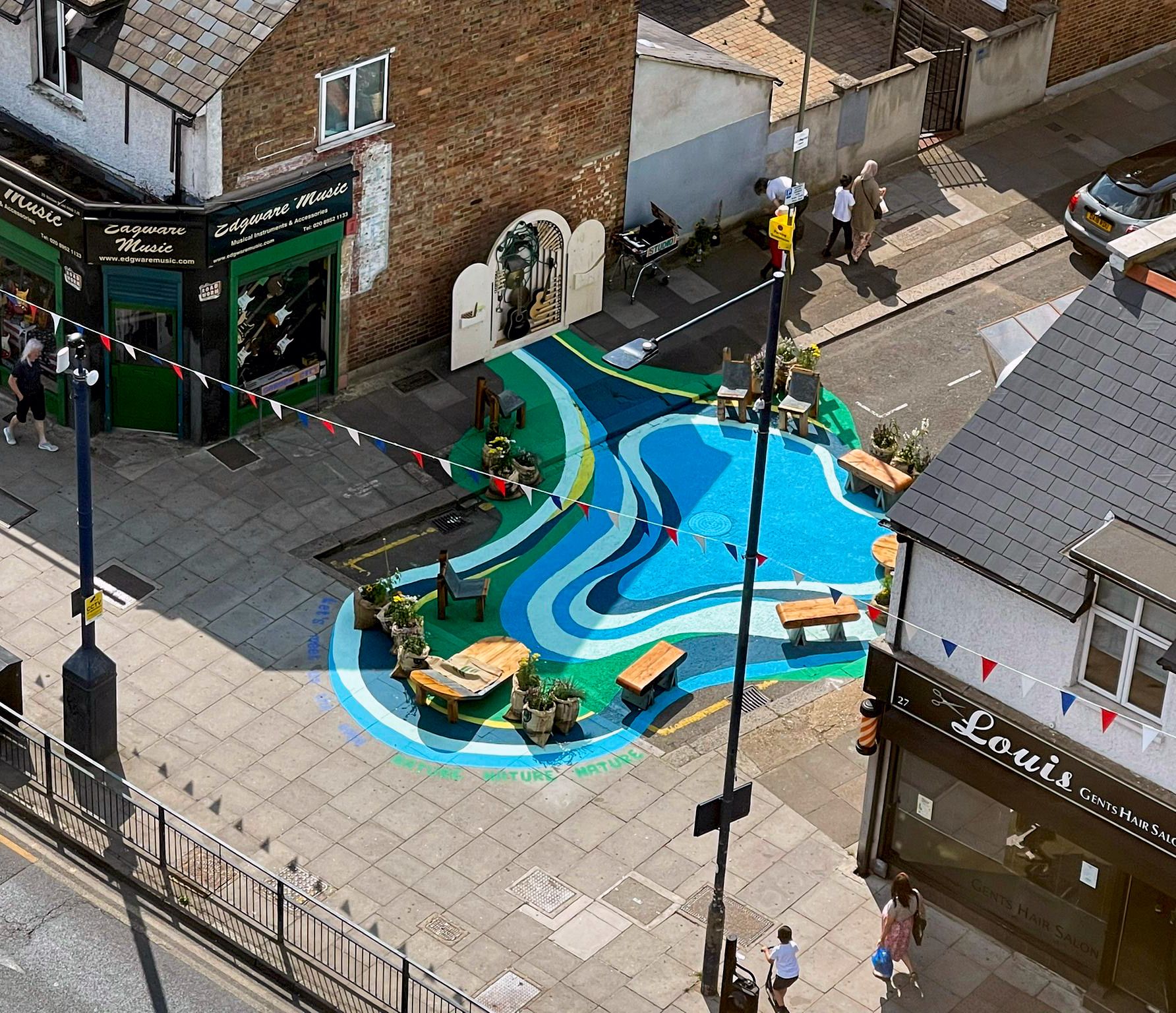Explore Adrienne Lau’s innovative approach to sustainable urban design, and follow her journey from London’s bustling streets to Colindale’s bamboo gardens, reshaping urban spaces one project at a time.
In the bustling streets of London, the skyline is dominated not by a celestial display of stars but by towering structures crafted from steel and concrete. Amidst this urban landscape, everything appears meticulously designed and man-made.
Architecture plays a significant role in our lives. We spend most of our time living, studying, and working in nicely designed buildings. So, it is a significant challenge to enhance architectural designs for sustainability and to minimize the negative environmental impacts of construction through improved efficiency and moderation in the use of materials, energy, construction space, and the ecosystem. One woman is trying to alter this urban landscape by engaging the local community by creating upcycling and eco-friendly architectural designs…
Adrienne Lau is a designer and architect. She was raised in Hong Kong, studied in the UK, and trained in the Netherlands. Currently, she works part-time at a prominent architectural design firm while developing various community initiatives. She implements upcycling techniques, such as creating art installations using reclaimed wood and applying lashing techniques to assemble reversible hammocks and shelves with bamboo.
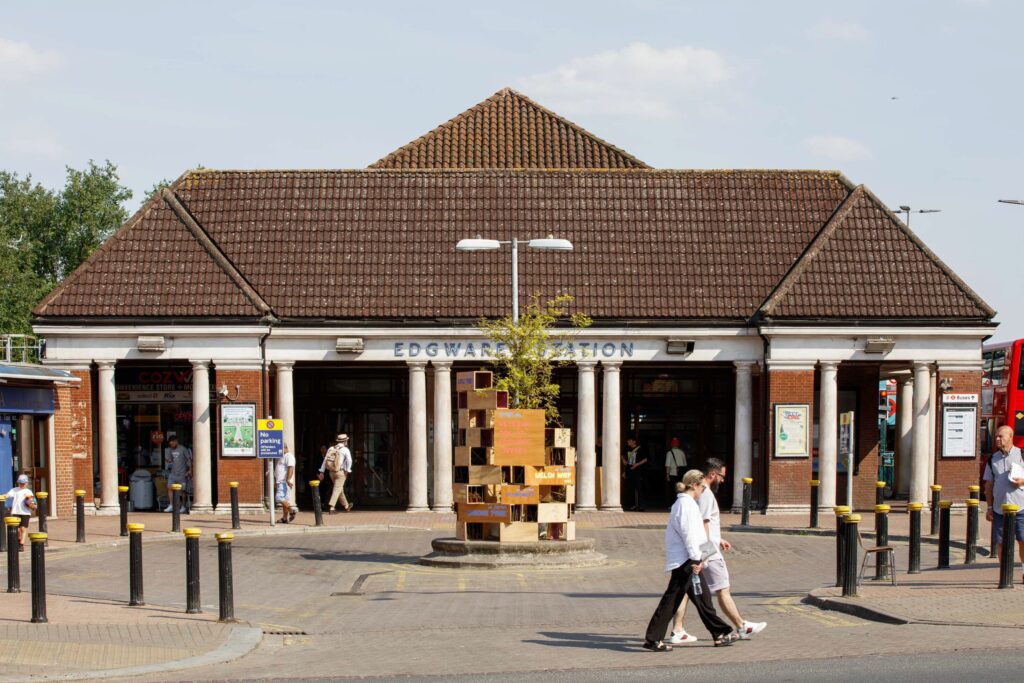
Image | provided by Adrienne Lau ©Luke O’Donovan
Her team, Edgy Collective, a team of designers and storytellers reimagining public spaces and fostering a deeper sense of community and ecological consciousness, was chosen by “More Edgware, Less Anywhere”, a competition launched by LFA (London Festival of Architecture) 2023 with Barnet Council, Transport for London and Ballymore last year. The winning design was a series of installation pieces called “Let’s Meet on the Edge” for the Edgware neighbourhood in North London.
The installations were located at different locations within the community with the first standing outside Edgware Station, which is a larger-than-life totem for invertebrates that serves as both an alternate wayfinding system and a celebration of Edgware’s insect population. It is made from a series of irregularly stacked wooden boxes, into which various objects—such as branches, leaves, and tiles—have been placed to create a habitat for insects. Also, there are colourful signs on the outer surface of the wooden box displaying the names, directions, and walking distances to various local landmarks like St. Margaret’s, Welsh Harp, Veteran Oak at Edgware Library, and more. These signs serve as street signs to help guide people in the busiest local traffic spot.
The second was Garden City. Here, you can see a large window-shaped wooden structure containing two guitars, two pieces of old cymbals disconnected from a drum set, and some long bamboo strips, forming a small music corner. Extending from this installation, they painted irregular curves on the ground with blue, green, and yellow paint to create an area. They placed wooden and iron chairs and used burlap bags as pots for grass and flowers, forming a relaxing urban garden in the city centre, transforming a barren space into a lively, energetic space teeming with life.
Break Bread at Bakery Path is the last one of the series of installations. In the alley next to Bakery Path, there is a large wooden door frame adorned with hemp rope. The wooden frame forms several small grids, each containing green plants. A unique vitality is infused into the community by the contrast between the wooden frame and the greenery.
Adrienne collaborated with two members of her team to create the three installations based on the community’s needs. They used natural and recycled components in each piece, highlighting the value of resource reuse boosting sustainability and keeping in line with the focus of the project: working with nature.
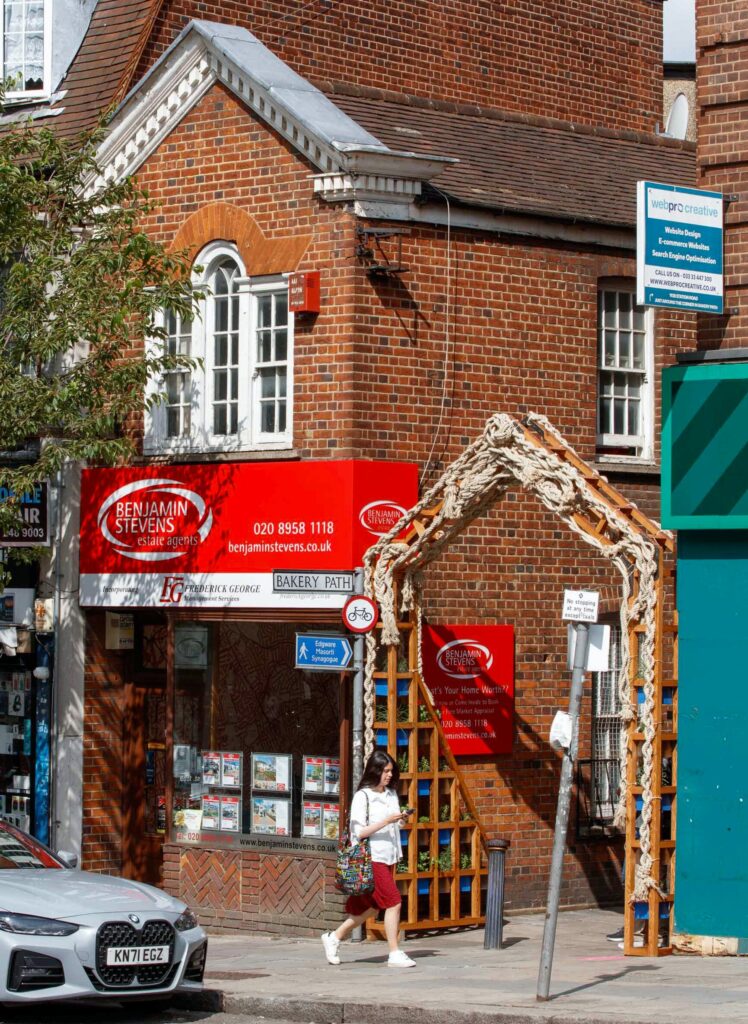
Image | provided by Adrienne Lau ©Luke O’Donovan
So, why would she decide to join the competition in the first place? Adrienne said that it was all by coincidence, as she started to rethink the relationship between architecture and the community during the pandemic. This was a period when she spent most of her time at home due to the lockdown. She began her journey to get involved in local activities, such as the sales day at the community garden, and got to know different people from various professional backgrounds who also care about nature and the community.
Besides the Edgy Collective’s project, Adrienne has also created several independent projects, such as using bamboo to construct vertical planting installations and bamboo prototypes for the greenhouse of Colindale Community Garden, in order to create a more functional and relaxed space.
When creating community projects, Adrienne usually starts with the materials she has already collected such as wood, bamboo, and iron. She explains, “my friend in the community has a garden full of bamboo. Since bamboo grows swiftly, I’ll use it for my sculptures once I’ve collected it.” The rest of the materials are also donated or collected from the neighbourhood.
When considering the interplay between cities, individuals, and structures, Adrienne’s focus is on the perceived disconnect between buildings and people. “There is potential for improved ventilation systems and climate-sensitive designs in many architectures,” says Adrienne, and it’s not necessarily confined to the use of steel and cement.
Yet, she is mindful that such changes could affect developers’ interests and present challenges for the public. The incorporation of alternative design methods in urban planning and architecture introduces additional restrictions and considerations to address.
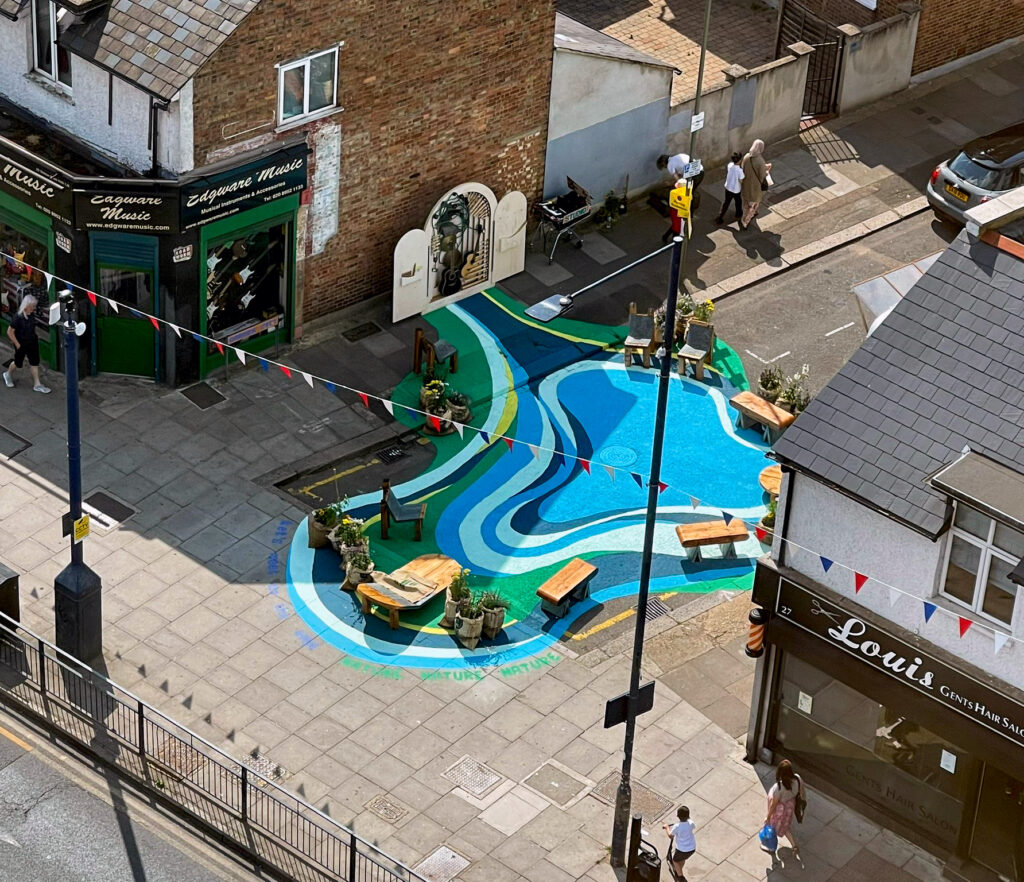
Image | provided by Adrienne Lau ©Luke O’Donovan
Adrienne believes that whether it is the impact of ecosystems, the climate crisis, or population, architecture, and urban habits influence each other. She pointed out that there are more possibilities in some architectural designs. “For example, in some Asian regions, the weather is hotter, but many buildings are equipped with glass curtain walls, which is very heat-absorbing, and then the air conditioners must remain at a lower temperature, which is bad for the environment. Actually, these are architectural habits,” she says.
So, is it feasible to use reuse or upcycling materials in a large-scale architectural design project? “It’s almost impossible,” she explains. “A building requires a lot of materials, and it is difficult to ensure the quantity and quality of reused materials are sufficient to build the entire building.”
She explains that, if you want to use old materials, such as reusing wood in construction, you will first face the difficulty of disassembly and storage costs. She pointed out that there are NGOs in foreign countries doing this kind of work, such as Rotor in Belgium, but such organisations are always in the minority. On the other hand, from a design perspective, there will be more restrictions on appearance, and only be able to deliver in certain styles, making it hard to fulfil the design needs. “Some people would argue that this is not a completely new design,” she says.
Although she says most people might embrace a vision for a better future and look for a more sustainable future, from the perspective of an investor, these look very far away. “What is needed is structural, bottom-up change,” she concludes.
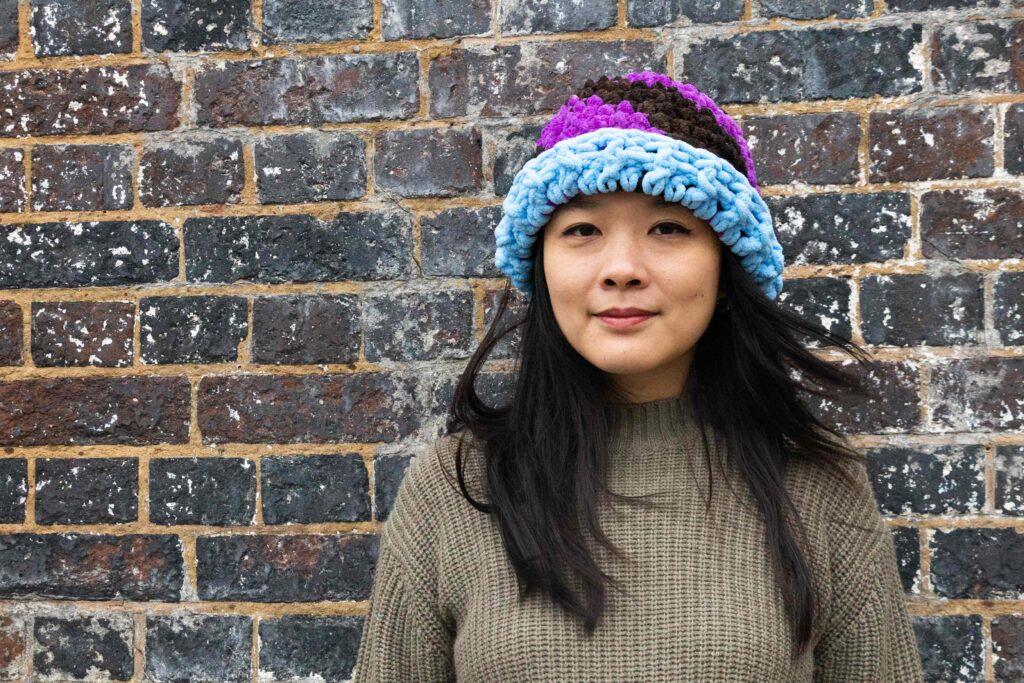
Image | taken by Cheryl Ng
*This interview was conducted in Cantonese and translated by the writer accordingly.
What is the London Festival of Architecture?
The London Festival of Architecture is a month-long festival of architecture and city-making that takes place within London annually June. The purposes of the festival are to test innovative ideas, discover and support rising talent, and foster conversations about architecture.
Website:
